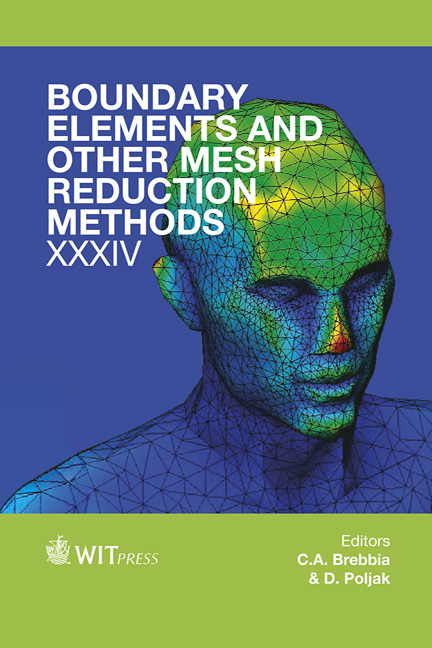Using A Dual-BEM Formulation To Model The Sound Pressure Wavefield Provided By Absorbing Thin Screens Attached To The Walls Of A Duct
Price
Free (open access)
Transaction
Volume
53
Pages
13
Page Range
271 - 283
Published
2012
Size
563 kb
Paper DOI
10.2495/BE120241
Copyright
WIT Press
Author(s)
J. António, L. Godinho, P. Amado Mendes & A. Tadeu
Abstract
The modelling of the 2D sound pressure wavefield in the presence of thin absorbing screens attached to the walls of a duct, assumed to be infinitely long, is described in this paper. The simulation uses a frequency-domain Dual-BEM (BEM/TBEM) formulation, which overcomes the thin-body difficulty that arises with the classical BEM formulation. The sound absorption is simulated by imposing impedance boundary conditions, which are applied in conjunction with a Dual-BEM approach. The fundamental solutions used in the formulation allow the solution to be obtained without discretizing the duct’s walls. Thus, only the boundary of each absorbing screen attached to the duct’s walls is modelled, which makes the proposed formulation efficient even at high excitation frequencies. The hypersingular integrals that result from the implementation of the TBEM are computed analytically. The formulation is used to compare results obtained with absorbing screens with those obtained with rigid screens and with those obtained in a duct without screens. Results in the time domain are obtained by applying an inverse Fourier transform to the frequency results. Keywords: dual-BEM, thin body, sound absorption. 1 Introduction The demand for quieter environments has led to the imposition of lower noise levels inside buildings. Those limits are usually imposed by legislation and building codes. Sound pressure levels inside buildings are often reduced by installing sound attenuation systems in ventilation ducts.
Keywords
dual-BEM, thin body, sound absorption.





